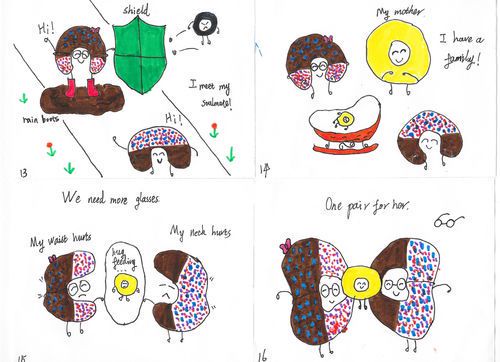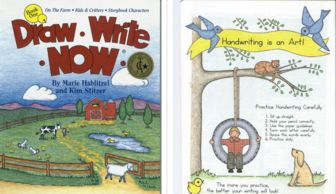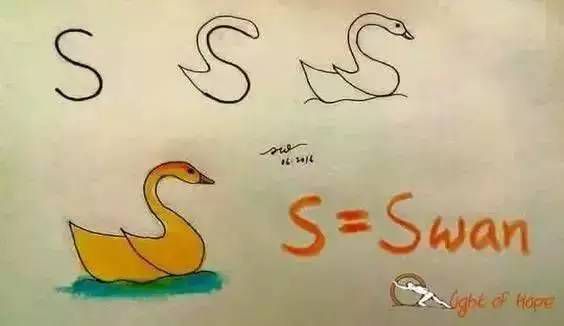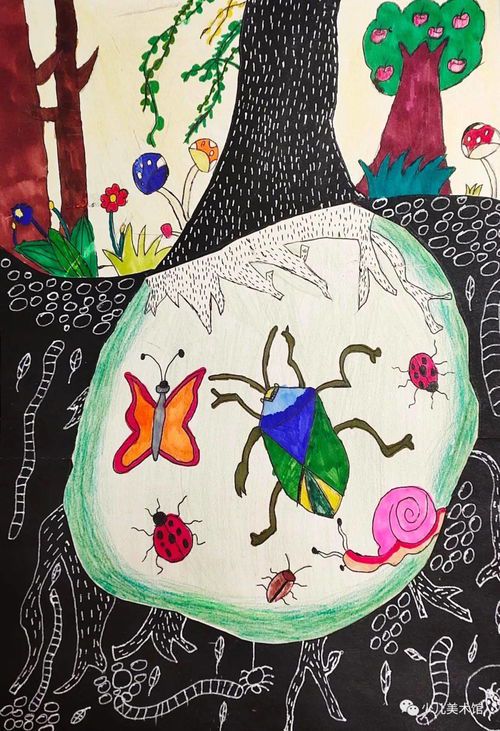
**Exploring the World of Painting Works in English**
英文 画画 字体设计 周慧敏 高居翰 字体 王诗龄 孩子 画史 大百科 毕加索 漂亮 抽象画 李湘 英语 首席 水墨发布日期: 2025-07-03

Painting, as a universal language of art, transcends cultural and linguistic barriers. However, when discussing or analyzing paintings in an English context, understanding the specific terminology and expressions becomes essential. This article delves into the nuances of describing, appreciating, and critiquing painting works in English, offering insights for art enthusiasts and learners alike.
The vocabulary used to describe paintings in English is rich and varied. Terms like "brushstrokes," "composition," and "palette" are fundamental to articulating the visual elements of a piece. For instance, "impasto" refers to thick layers of paint, while "chiaroscuro" describes the contrast between light and shadow. Mastering these terms allows for a deeper engagement with the artwork and more precise communication about its features.
Beyond technical terms, the emotional and thematic aspects of paintings are often explored in English through descriptive language. Phrases like "evokes a sense of tranquility" or "conveys raw emotion" help convey the subjective experience of viewing a piece. Art criticism in English also frequently employs metaphors and analogies, comparing a painting's vibrancy to "a burst of spring" or its gloom to "a stormy sea."
Historical and cultural context plays a significant role in discussing painting works in English. References to movements like "Renaissance," "Impressionism," or "Abstract Expressionism" provide frameworks for understanding a painting's style and intent. Additionally, biographical details about the artist, such as their influences or societal challenges, often enrich the interpretation of their work.
For non-native English speakers, engaging with painting-related content—such as exhibition catalogs, art reviews, or academic papers—can be both challenging and rewarding. Building a specialized vocabulary and familiarizing oneself with common phrases used in art discourse are crucial steps. Online resources, art documentaries, and even virtual museum tours can serve as valuable tools for immersion.
In conclusion, exploring painting works in English opens doors to a global art community. Whether for academic purposes, personal enrichment, or professional critique, the ability to articulate thoughts about art in English enhances one's appreciation and connection to the creative world. By embracing the language of art, we bridge gaps and foster a deeper understanding of humanity's shared visual heritage.


绘画之乐:用英语探索艺术世界
发布日期: 2025-07-03
彩色绘画英文:艺术与语言的交融
发布日期: 2025-06-26
我喜欢用英语表达对绘画的热爱
发布日期: 2025-06-26
绘画与英语:我的双重热爱
发布日期: 2025-07-29
如何用英语表达“漂亮的绘画”
发布日期: 2025-06-16
Computer Painting in English
发布日期: 2025-08-02
**绘画作品的英文表达与艺术术语解析**
发布日期: 2025-06-16
绘画作品的英语表达与艺术术语解析
发布日期: 2025-06-25
**Exploring the World of Painting Works in English**
发布日期: 2025-07-03
English Painting Masterpieces
发布日期: 2025-06-04
绘画的英文表达及其相关用法
发布日期: 2025-07-01
绘画的英文表达与艺术术语解析
发布日期: 2025-06-19
如何正确书写“绘画”的英语单词
发布日期: 2025-06-08
绘画英语单词怎么写
发布日期: 2025-06-08
绘画的英文表达与相关术语解析
发布日期: 2025-06-10
从零开始学绘画:0基础入门指南
发布日期: 2025-07-22
3D绘画教学:从入门到精通
发布日期: 2025-06-12
5岁儿童绘画作品的艺术世界
发布日期: 2025-07-31
7岁儿童美术绘画教学指南
发布日期: 2025-07-07
7岁~12岁创意美术画:激发孩子无限想象力的艺术之旅
发布日期: 2025-06-10
儿童绘画启蒙:7岁~12岁创意成长指南
发布日期: 2025-07-02
AI绘画辅助:技术与艺术的完美融合
发布日期: 2025-06-15